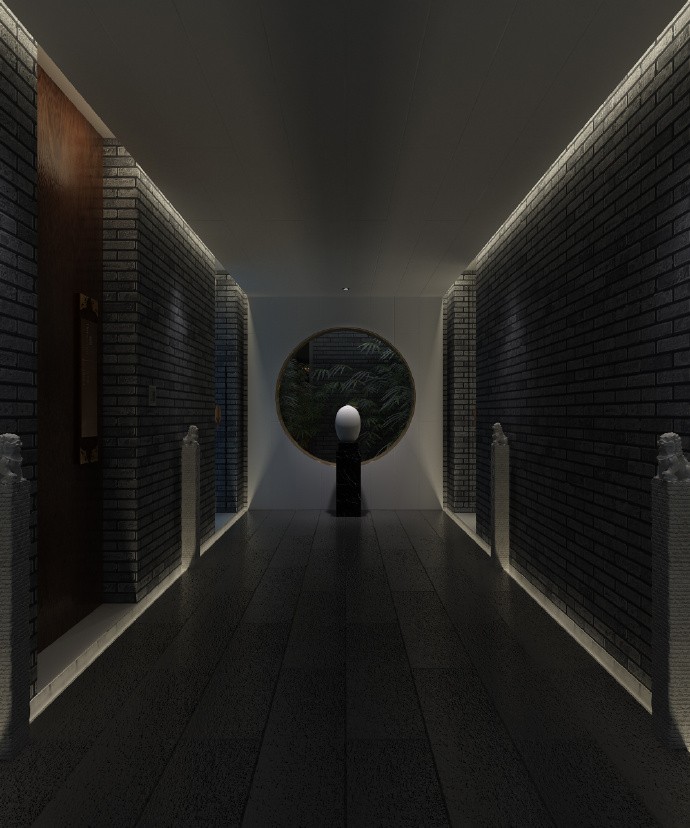Udbetaling Danmark Holstebro CEBRA
2013-04-13 01:00
架构师提供的文本描述。位于霍尔斯特布罗的公共当局UdbetingDanmark(UDK)的新住所为整个丹麦中西部地区管理着一系列重要的社会服务,如国家养老金和产妇工资。该大楼将几个市镇的雇员集中在一个新的行政大楼中,该大楼必须处理并确保为公民提供集中和高效的服务。
Text description provided by the architects. The new domicile for public authority Udbetaling Danmark (UDK) in Holstebro manages a series of vital social services, such as state pension and maternity pay, for the entire region of Midwestern Denmark. The building gathers employees from several municipalities in one new administration building, which has to handle and ensure a centralized and efficient service for the citizens.
该项目的架构范围包括满足两个总体需求。首先,该架构必须辐射出高质量、高效率、开放和乐于助人的精神,因为该中心管理着大量公民的金融事务。因此,这个项目适应了周围的环境,同时也用自己的正式语言来提醒自己和它的位置-而不显得浮夸。其次,建筑必须创造和支持一种工作环境,将内部协作和社会关系的最佳条件与现代办公景观结合起来,这种环境由逻辑、灵活和透明的结构结合在一起。
The project’s architectural scope consists of meeting two overall demands. Firstly, the architecture has to radiate high quality and efficiency as well as openness and helpfulness, as the centre administers financial affairs for a large group of citizens. Thus, the project adapts to the surrounding context, while at the same time calling attention to itself and its location with a formal language of its own – without appearing ostentatious. Secondly, the architecture has to create and support a working environment that combines optimal conditions for internal collaborations and social relations with a modern office landscape that is bound together by a logical, flexible and transparent structure.
在此基础上,建筑师们设计了一座有特色的建筑,它源于一个清晰的建筑概念-一种简单而又可识别的三角形结构,其多种和功能性的空间形态是在有意识地利用三角形作为造型元素的基础上发展起来的。在丹麦的建筑景观中,三角形是一个不寻常的形状,因此,UDK会引起人们对它自身的关注,但不会在视觉上压倒它周围的环境。三角形卷在现场的方向,目的是创造一个理想的组合曝光,视图,日光条件和减少热应力。由于卷的一面是向北的,没有直接的南立面,这降低了过热的风险和对遮阳篷的需求。北外立面朝向相邻的环形公路,增强了大楼的曝光率和能见度,同时屏蔽了雇员在西边的露台和从公路通往东南方向的入口。
On this basis, the architects designed a characterful building that derives from a clear architectonic concept – a simple yet recognizable triangular construction with manifold and functional spatial formations that developed out of a conscious use of the triangle as shaping element. The triangle is an unusual shape in the Danish architectural landscape and thus, UDK will draw attention to itself, but without visually overpowering its surroundings. The triangular volume’s orientation on the site aims at creating an ideal combination of exposure, views, daylight conditions and reduced thermal stress. As one of the volume’s sides is oriented northwards there is no direct southern façade, which reduces the risk of overheating and the need for sunshades. The northern façade’s orientation towards the adjacent ring road enhances the building’s exposure and visibility while screening the employee’s terrace to the west and the entrance to the southeast from the road.
在整个内部,三角形的基本形状创造了一个可识别的模式,在不同的尺度上一致地应用,以提取有价值的空间品质和功能细分。为了将建筑物分成几个部分,插入了一个三角形的内部中庭。中庭旋转180°,使其尖端满足建筑物的外部边缘。由于它与正面直接接触,中庭的形状和方向允许大量的日光到达建筑中心。
Throughout the interior the basic shape of the triangle creates a recognizable pattern that is applied consistently and in varying scales in order to extract valuable spatial qualities and functional subdivisions. In order to divide the building into subsections, a triangular interior atrium is inserted. The atrium is rotated 180° so that its tips meet the building’s outer edges. Given its direct contact to the facades, the atrium’s shape and orientation allow a large amount of daylight to reach the building centre.
这个中心空间的尖端被人行道和工作区“切断”,将中庭分成一个主空间和三个小的中庭。主空间略有不对称,每层空间都旋转,从而产生不同楼面到天花板高度不同的空间,使建筑在不同的工作环境下灵活使用。因此,与传统的中庭建筑相比,功能之间的内部联系越来越多,并且变得更加多样化。此外,这种策略也满足了提供多种不同空间品质的抱负,员工可以根据需要、情绪或项目来选择。三个小的中庭通过在地板上创造额外的视觉连接来提高内部的透明度。它们独特的空间特性也可用来标记具有专门功能的地点,如休息室、非正式会议等。
The tips of this central space are “cut off” by walkways and workspace areas, dividing the atrium into a main space and three small atriums. The main space is slightly asymmetric and rotates for each floor, so that varied spaces with different floor-to-ceiling heights emerge, which makes the building flexible and usable in different working situations. Thus, the internal contact between functions increases and becomes much more varied than in a traditional atrium building. In addition, this strategy also meets the ambition of providing manifold of different spatial qualities, which employees can turn to according to needs, mood or project. The three small atriums contribute to the internal transparency by creating additional visual connections across the floors. Their distinctive spatiality can also be used to mark spots with specialized functions, e.g. break rooms, informal meetings etc.
该建筑的设计是为了在通风、照明、取暖和冷却方面消耗最少的能量,同时保持尽可能好的室内气候。通过综合能源设计过程对设计进行优化,从项目一开始,能源和室内气候就构成了综合设计参数,并与建筑和材料的选择不断互动。
The building is designed in order to consume a minimal amount of energy for ventilation, lighting, heating and cooling and to maintain the best possible indoor climate at the same time. The design is optimised through an Integrated Energy Design process, where energy and indoor climate constituted integrated design parameters from the project’s very beginning, continuously interacting with architectural and materials choices.
 举报
举报
别默默的看了,快登录帮我评论一下吧!:)
注册
登录
更多评论
相关文章
-

描边风设计中,最容易犯的8种问题分析
2018年走过了四分之一,LOGO设计趋势也清晰了LOGO设计
-

描边风设计中,最容易犯的8种问题分析
2018年走过了四分之一,LOGO设计趋势也清晰了LOGO设计
-

描边风设计中,最容易犯的8种问题分析
2018年走过了四分之一,LOGO设计趋势也清晰了LOGO设计


































































































